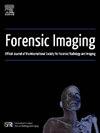White paper by the international society of forensic imaging guidelines working group on non-contrast PMCT for decomposed remains
IF 1
Q4 RADIOLOGY, NUCLEAR MEDICINE & MEDICAL IMAGING
引用次数: 0
Abstract
Overdose deaths, particularly from opioids and synthetic analogs, continue to rise globally. While some cases present with overt indicators, others lack external signs, complicating initial investigation. Postmortem computed tomography (PMCT) has emerged as a valuable adjunct in these cases, offering radiologic features that may suggest overdose and support triage, even in unsuspected deaths. Characteristic findings—such as cerebral edema, pulmonary edema, and urinary bladder distention—comprise the so-called “overdose triad,” which demonstrates high specificity for overdose-related fatalities. PMCT also detects ancillary features including findings related to pill fragments, signs of body packing, and hypertensive intracerebral hemorrhage. In overdose investigations, PMCT’s high negative predictive value helps exclude internal trauma and skeletal injuries, guiding case management and informing decisions on the necessity for full autopsy. While PMCT findings are not pathognomonic and may be absent in rapidly fatal intoxications, the technique offers considerable value, particularly when integrated with toxicological analysis and full autopsy. The International Society of Forensic Radiology and Imaging (ISFRI) supports the standardized use of PMCT in suspected overdose deaths as part of a comprehensive forensic approach.
国际法医成像指南协会工作组关于分解遗体非对比PMCT的白皮书
过量死亡,特别是阿片类药物和合成类似物,在全球继续上升。虽然有些病例有明显的体征,但其他病例缺乏外部体征,使初步调查复杂化。在这些病例中,尸检计算机断层扫描(PMCT)已经成为一种有价值的辅助手段,它提供了可能提示用药过量的放射学特征,并支持分诊,即使是在未被怀疑的死亡中。特征性表现,如脑水肿、肺水肿和膀胱膨胀,构成了所谓的“过量三联征”,这表明了过量相关死亡的高特异性。PMCT还可以检测辅助特征,包括与药片碎片、身体堆积和高血压脑出血相关的发现。在过量调查中,PMCT的高阴性预测值有助于排除内部创伤和骨骼损伤,指导病例管理,并告知是否需要进行全面尸检的决定。虽然PMCT的发现并不是典型的,而且在快速致命的中毒中可能没有发现,但该技术具有相当大的价值,特别是当与毒理学分析和全面尸检相结合时。国际法医放射学和成像学会(ISFRI)支持将PMCT作为综合法医方法的一部分用于疑似过量死亡的标准化使用。
本文章由计算机程序翻译,如有差异,请以英文原文为准。
求助全文
约1分钟内获得全文
求助全文
来源期刊

Forensic Imaging
RADIOLOGY, NUCLEAR MEDICINE & MEDICAL IMAGING-
CiteScore
2.20
自引率
27.30%
发文量
39
 求助内容:
求助内容: 应助结果提醒方式:
应助结果提醒方式:


